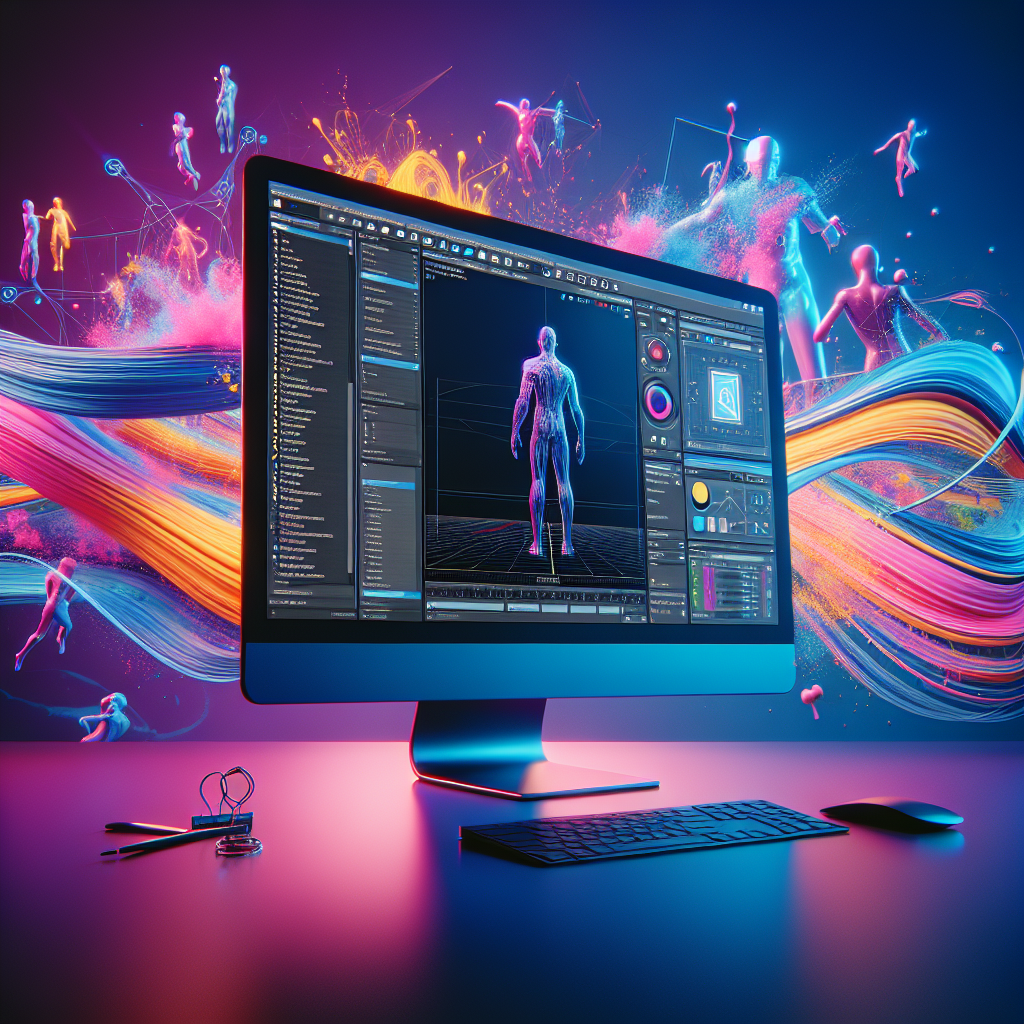Embracing the Future: Transforming Photos into 3D Game Characters
As technology continues to evolve at a breathtaking pace, the intersection of art and digital innovation is creating opportunities that were once the stuff of dreams. One particularly exciting advancement is the ability to transform a simple photograph into a fully-fledged 3D character model, opening new realms of creativity for gamers, artists, and developers alike. This article explores the thrilling journey of turning images into 3D characters, the tools available, and the future of digital character creation.
The Rise of 3D Digital Characters
In recent years, the gaming industry has seen a profound shift towards more immersive experiences. Players are no longer satisfied with static avatars; they seek personalized representations that resonate with their own identity. This demand has given rise to tools that allow individuals to create 3D models from 2D photographs, bridging the gap between reality and the virtual world.
The process is surprisingly straightforward. As demonstrated by an enthusiastic user who transformed their photo into a 3D character, it involves uploading an image to a specialized platform that generates a digital likeness. In the case observed, the transformation process was initiated by simply dragging a 2D image into an interface designed for 3D modeling. The results? A digital avatar ready to be rigged, animated, and ultimately integrated into video games or simulations.
How it Works: The Technology Behind the Transformation
The ability to convert images into 3D models relies on sophisticated algorithms and machine learning techniques. These technologies analyze the input photograph and extract key facial features and proportions, allowing the software to create a three-dimensional representation. Notably, platforms like try3d.ai make this process accessible to anyone, regardless of their technical expertise.
This democratization of technology enables users to engage in creative pursuits without needing advanced skills in modeling software like Blender or Unreal Engine. Consequently, a wider audience can dive into the realm of game design and animation, fostering an environment where innovation flourishes.
The Creative Possibilities
Once you have your 3D character, the possibilities are nearly limitless. Users can integrate their models into various platforms, such as popular game engines or animation software, to create unique experiences. With the right rigging, your digital avatar can walk, run, jump, and even perform complex animations like a somersault. The excitement lies in the potential to craft personalized stories and experiences that align with individual preferences.
Imagine creating an animated short film featuring characters modeled after friends or family, or perhaps designing a custom game where each player is represented by their 3D avatar. The potential for social interactions within these virtual environments is immense, contributing to the evolving narrative of digital engagement.
Practical Applications Beyond Gaming
While the gaming industry is a primary beneficiary of this technology, the applications extend far beyond mere entertainment. Educators and trainers can utilize 3D character modeling to create engaging instructional materials. For example, medical students can practice surgery on realistic 3D avatars that resemble actual patients, honing their skills in a safe and controlled environment.
Additionally, businesses can employ customized avatars for marketing and branding purposes. Personalization can significantly enhance customer engagement, making brands memorable and relatable. The use of digital avatars in virtual reality (VR) applications is also gaining traction, providing users with immersive and interactive experiences that connect them more deeply with the content.
Looking Ahead: The Future of 3D Character Creation
As we look to the future, the implications of this technology are vast. The ongoing advancements in artificial intelligence and machine learning will undoubtedly lead to even more sophisticated tools. Imagine an application that not only generates a 3D model from a photo but also predicts animations based on the user's intended narrative or context.
Moreover, the integration of augmented reality (AR) could bring these characters into the real world, allowing users to interact with their creations in innovative ways. This synergy between AR and 3D modeling could redefine how we perceive reality, blending the lines between the digital and physical worlds.
In this context, we find ourselves at the precipice of a new era where creativity is no longer constrained by technical limitations. The ease of creating and animating 3D characters invites everyone—artists, gamers, educators, and businesses—to explore new artistic horizons and foster innovative expressions of identity and creativity.
For anyone interested in diving deeper into the world of 3D modeling, check out resources like:
- Blender: A powerful open-source 3D creation suite.
- Unreal Engine: A leading platform for game development and visualization.
With these tools at your disposal, the journey into creating 3D avatars and characters is just a few clicks away. The world of digital creation is expanding, and the only limit is your imagination.
Source: https://www.youtube.com/watch?v=iZxBktrPo4A
Related News
- Unveiling the Realism: The Evolution of AI-Generated Imagery
- Unleashing Artflow: The AI That Transforms You Into Anything
- Exploring the Evolution of AI Avatars with Hey Genen's Avatar 4
- Deep Dive into Generating AI Imagery: Exploring the Potential and Pitfalls
- Dive Into PhotoMaker: The Dawn of Instantaneous AI Art Generation
